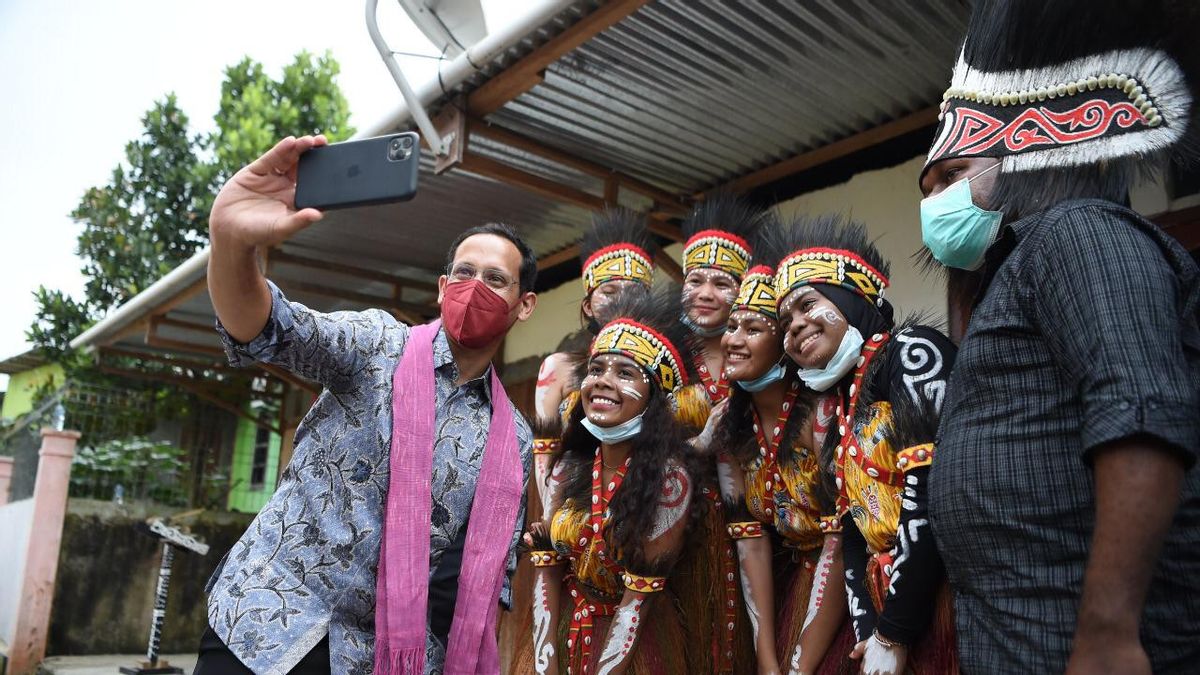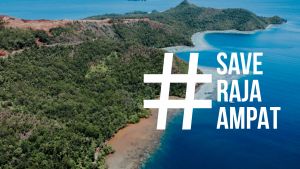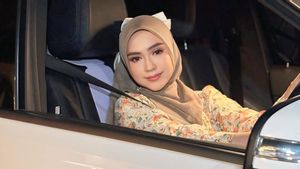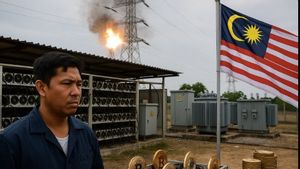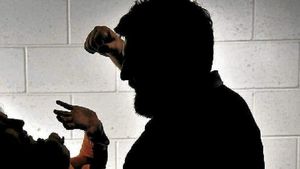JAKARTA - Minister of Education, Culture, Research and Technology Nadiem Makarim launched the Merdeka Curriculum. The Independent Curriculum is a substitute for the Prototype Curriculum. According to Nadiem, the Independent Curriculum has been tested in 2,500 driving schools. In addition, this curriculum was also launched in other schools.
"This simplification of the emergency curriculum is effective in mitigating learning lags during the COVID-19 pandemic," said Nadiem, at the launch of the Fifteenth Free Learning Episode, Friday, February 11, 2022 online on the Menpan.go.id website.
According to Nadiem, during the COVID-19 pandemic, the existing learning crisis made education even more lagging behind with learning loss and increasing learning disparities between regions and between socio-economic groups. To restore post-pandemic learning, the Ministry of Education, Culture, Research, and Technology (Kemendikbudristek) launched Merdeka Learning Episode Fifteenth: Independent Curriculum and the Merdeka Teaching Platform.

Minister of Education and Technology Nadiem Makarim at the virtual launch of the Merdeka Curriculum and the Merdeka Teaching Platform, Friday 11 February 2022. (Source: Screenshot)
Quoted from the Public Relations of the Ministry of Education and Culture on February 11, 2022, Minister of Religion (Menag) Yaqut Cholil Qoumas expressed full support for the steps of the Ministry of Education and Culture which will implement the Independent Curriculum policy starting in 2022 as an effort to restore learning.
Deputy Chairman of Commission X DPR RI, Hetifah Sjaifudian also welcomed the presence of the Independent Curriculum. According to him, the Independent Curriculum is an important learning transformation, not only in dealing with post-pandemic education but also in dealing with the world situation that continues to change according to the times.
"I believe that every child is unique, therefore a holistic, flexible approach and a focus on children's competence is the key to developing children to the maximum for the goals they want to achieve," said Hetifah.
Claimed to have an advantage
Quoted from menpan.go.id, according to Nadiem, one of the advantages of the Merdeka Curriculum is that there is no specialization program for students at the high school (SMA) level. High school students, he said, can now choose subjects according to their interests and aspirations in the last two years of school. Nadiem. Freedom of choice is not only given to students, but also to teachers and schools
Nadiem also mentioned about the implementation of the Independent Curriculum. Nadiem gave freedom to the school. He stated that the Ministry of Education and Culture will not force the implementation of the Independent Curriculum.
"In recent years, many people in our education world are allergic to the terminology often called changing ministers, changing curriculum," said Nadiem.
"I am here with pleasure to announce that with Merdeka Learning there will be no coercion, in the next 2 years there will be no coercion," he added.
According to Nadiem, the purpose of the Merdeka Curriculum was to recover from learning backwards or recovery from learning losses due to the COVID-19 pandemic.

The stigma of changing ministers to change the curriculum attached to the Ministry of Education is always viral whenever it is heard that there is a government plan to change the national education curriculum. To the extent that the term seems to be a "scourge" for the minister of education to implement the new national education curriculum. Actually, what is wrong with changing ministers, changing curriculum, and is it true that this phenomenon occurs?
Looking at history, during the 76 years of Indonesia's independence, the government has changed the curriculum 10 times, namely 1947, 1952, 1964, 1968, 1975, 1984, 1994, 2004, 2006, and 2013. Kemendikbudristek, since independence there have been 44 cabinets that have 34 different education ministers.
History of Curriculum in Indonesia
The curriculum comes from English, namely curriculum which means a study plan. The word curriculum itself is an absorption of the Latin currere which has many meanings. In Indonesia, the curriculum has changed several times. This curriculum change is usually caused by a change in the Minister of Education and Culture.
The following are some of the curricula that have existed in Indonesia:
1. Curriculum 1947
The curriculum, which began to be applied in 1950, is known as a leer plan which in Dutch means lesson plan. Because at that time Indonesia was still in the spirit of fighting for independence, its education system was still heavily influenced by the Dutch. Therefore, this curriculum continues what has been used by the Dutch before. The main feature of this curriculum is that it emphasizes the formation of Indonesian human character that is independent, sovereign, and equal to other nations.
2. Curriculum 1952
In 1952, the Indonesian curriculum underwent improvements. This curriculum has led to a national education system. Its characteristic is that every lesson content must be connected with everyday life.
3. 1964 Curriculum
In the 1964 curriculum, the government wanted the people to get academic knowledge for debriefing at the elementary level. That way, subjects are classified into five groups of fields of study, namely morals, intelligence, emotional/artistic, skills, and physical. These five things are also known as the Pancawardhana program. There are also those who say that Pancawardhana focuses on developing creativity, taste, intention, work, and morals.
4. Curriculum 1968
It is aimed at forming true, strong, physically fit Pancasila people, enhancing physical intelligence and skills, morals, character, and religious beliefs. Therefore, the subjects made are more theoretical. The curriculum also emphasizes an organizational approach to subject matter, such as Pancasila coaching groups, basic knowledge, and special skills.
5. Curriculum 1975
This replacement for the 1968 curriculum aims to make education more effective and efficient. This curriculum was influenced by the concept in the field of management that was well known at that time, namely MBO (management by objective). The objectives, materials, and teaching methods are set out in detail in the Instructional System Development Procedure (PPSI). This period is known as the "lesson unit", ie lesson plans are made for each unit of discussion. Each unit of study is further broken down into general instructions, specific instructional objectives (ICT), subject matter, learning tools, teaching and learning activities, and evaluation. This curriculum has received a lot of criticism because every teacher is busy because they have to write down the details of what will be achieved from each learning activity.

6. 1984 Curriculum
This curriculum is often called the enhanced 1975 curriculum. One of the important figures behind the birth of this curriculum is Dr. Conny R. Semiawan, Head of the Ministry of National Education Curriculum Center 1980-1986. Using a model which is also known as Student Active Learning (CBSA) or Student Active Learning (SAL). However, many schools feel that this system is less effective because the classroom atmosphere is not considered conducive to learning. Many CBSA rejections have sprung up.
7. 1994 Curriculum and 1999 Curriculum Supplement
It is a blend of the 1975 curriculum and the 1984 curriculum. The aim is to emphasize that students better understand concepts and are skilled in solving problems and problems. The one-year learning system is divided into three quarters. So, it is hoped that students can receive more subject matter. The student's learning burden which is considered too heavy causes various kinds of criticisms of this curriculum to be spread.
8. Curriculum 2004
This curriculum is known as the Competition-Based Curriculum (KBK). According to the Ministry of National Education, KBK is a set of regulatory plans regarding competencies and learning outcomes that must be achieved by students, assessment, teaching and learning activities, and empowerment of educational resources in school curriculum development. Each subject has details of what competencies students must achieve. However, there is confusion in this system. The measuring instrument for the achievement of student competence is only in the form of the Final School Examination and the National Examination, the answers of which are multiple choice questions. If the goal is to hone students' competence, the measurement tools should be more practical or descriptive questions so that understanding is more visible.
9. 2006 curriculum
In 2006, KBK was discontinued and replaced by KTSP (Education Unit Level Curriculum). If seen, this curriculum is not much different from the 2004 curriculum. It's just that KTSP gives more freedom to teachers to plan learning according to the environment, student conditions, and school conditions. The Ministry of National Education has established the basic framework (KD), graduation competency standards (SKL), competency standards and basic competencies (SKKD) for each subject in the education unit. So, the learning system and syllabus are the authority of the school, which is coordinated and supervised by the Regency/City government. At the end of 2012, KTSP was finally replaced with a new curriculum because it was considered less successful.
10. Curriculum 2013
The 2013 curriculum or commonly referred to as Kurtilas is a transition of government between President SBY and President Jokowi. Kurtilas has four aspects of assessment, namely knowledge, attitudes, skills, and behavior. Anies Baswedan had time to stop the implementation of Kurtilas in several schools to re-evaluate this curriculum. In 2016, this curriculum was revised and re-implemented in several schools. (Source: Litbang Dikbud)
The English, Chinese, Japanese, Arabic, and French versions are automatically generated by the AI. So there may still be inaccuracies in translating, please always see Indonesian as our main language. (system supported by DigitalSiber.id)
